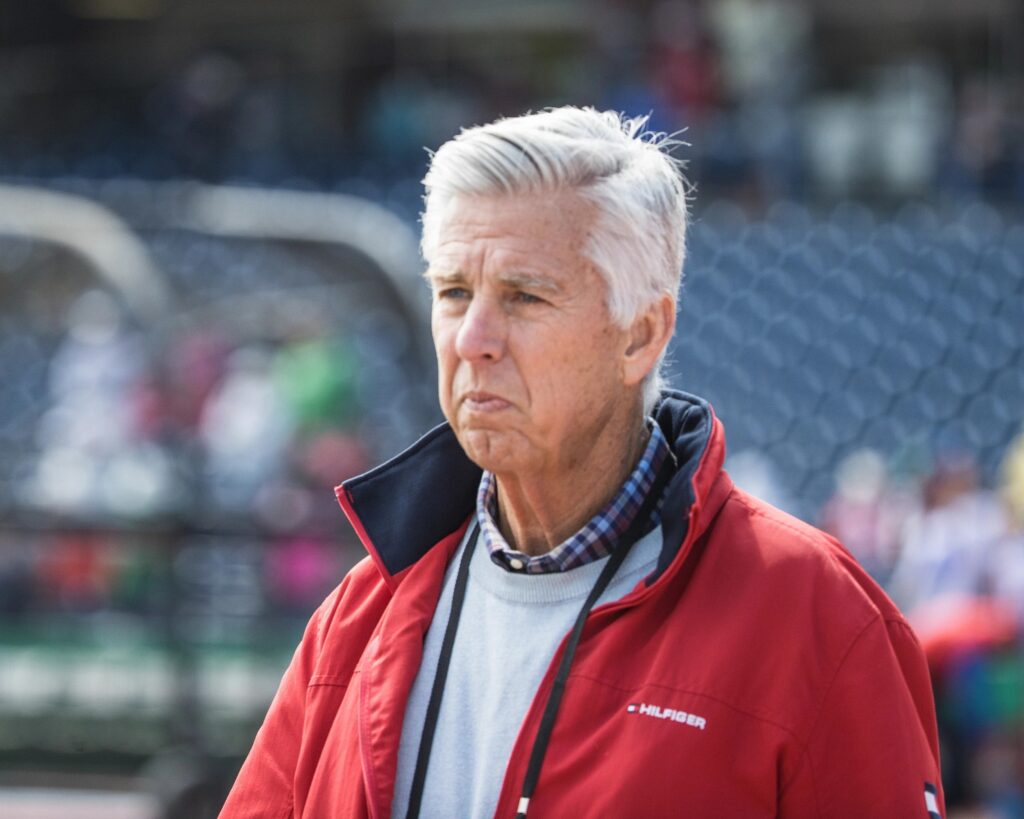

Prior to the 2022 season, one of the biggest questions surrounding the Philadelphia Phillies every offseason since the end of the rebuild was whether or not ownership would green light a payroll above the competitive balance tax, better known as the luxury tax.
Those days are over.
The team went over for the first time in 2022 to sign Nick Castellanos and exceeded the second tier in 2023.
The Phillies are projected to be over the $237 million first luxury tax threshold for 2024 after signing Aaron Nola to a seven-year, $172 million deal. The team will almost certainly be over at least the second tier by the end of the season.
It’s something Phillies fans should not be too worried about. The Phillies’ luxury tax bill in 2022 was $2.6 million, according to a report from the Associated Press. The 2023 tax bill will likely come at around $10 million, the same price the Phillies paid for one year of Craig Kimbrel. Next year’s luxury tax bill could exceed $15 million, but it’s a drop in the bucket for a franchise worth $2.5 billion.
Still, it will be interesting to see how far the Phillies will be willing to take their payroll.
In the event that the Phillies shock the baseball world and sign Shohei Ohtani or Yoshinobu Yamamoto, they will exceed the third tier for the first time ever.
With the usual “it’s not your money” caveat, here is a look at the Phillies’ projected luxury tax payroll situation for 2024.
Guaranteed Contracts
Listed below are all of the guaranteed contracts on the books. It includes remaining years and salary along with the average annual value.
Average annual value is the number that matters when calculating luxury tax payroll. It’s the total value of a player’s contract divided by the number of years a player is signed for.
For example, J.T. Realmuto is owed $47.75 million over the next two seasons he is under contract for. His average annual value, the salary that counts towards the luxury tax, is $23.6 million. He originally signed a five-year, $115 million contract prior to the 2021 season.
Arbitration
Eight Phillies players, Gregory Soto, Ranger Suárez, Alec Bohm, Jeff Hoffman, Edmundo Sosa, Jake Cave, Dylan Covey and Garrett Stubbs, are arbitration eligible.
Cave, Covey and Stubbs have already agreed to terms on a 2024 contract. Soto, Suárez, Bohm, Hoffman and Sosa have been tendered contracts, but have not yet agreed to a salary with the team for 2024. Salary estimates for all five players come from MLB Trade Rumors’
arbitration projection.Per Joel Sherman of the New York Post, $400,000 of Stubbs’ $850,000 salary for 2024 is guaranteed. Covey will make $850,000 if he is in the majors.
Arbitration salaries are based on service time and past salaries of arbitration-eligible players respective to their position. Arbitration-eligible players can either agree to a salary with their team by the salary-exchange deadline in January or go to an arbitration hearing where a panel of arbiters decide the player’s salary.
Pre-Arbitration
Players who are not arbitration eligible or on a guaranteed contract make at least the league minimum. Most players with at least one day of service time make slightly above league minimum. For example, according to USA Today’s database, Brandon Marsh and Bryson Stott both made $734,500 in 2023, $14,500 above league minimum. Marsh and Stott will both be eligible for arbitration starting in 2025.
The league minimum salary for 2024 is $740,000.
Using FanGraphs Roster Resource’s method of estimating pre-arbitration salary, the Phillies are projected to spend $11.1 million in pre-arbitration salaries in 2024. The number accounts for additional players needed throughout the season to cover injured list stints. In reality, that $11.1 million estimation is likely higher when factoring in incremental pre-arbitration raises.
Player benefits paid ($17 million), minor leaguers on the 40-man roster salaries ($2.5 million), and the team’s standard contribution to the league’s pre-arbitration bonus pool ($1.67 million) all count towards the luxury tax payroll.
Tax Space
As a likely third-time offender in 2024, the Phillies will pay a 50% tax on overages up to $20 million. Overages between $20 million and $40 million are taxed at 62%. Third-tier overages are taxed at 95%.
If the Phillies finish the 2024 season $40 million or more over the $237 million first luxury tax threshold, the team’s highest selection in the 2025 MLB Draft will be moved back 10 spots, unless it is a top-six pick. In that case, the team’s second-highest pick gets moved back 10 spots.
In summary, the Phillies are currently projected to be over the $237 million first luxury tax threshold by $15.8 million. They are $4.1 million short of the $257 million second tier and are $24.1 million away from going over the $277 million third tier.